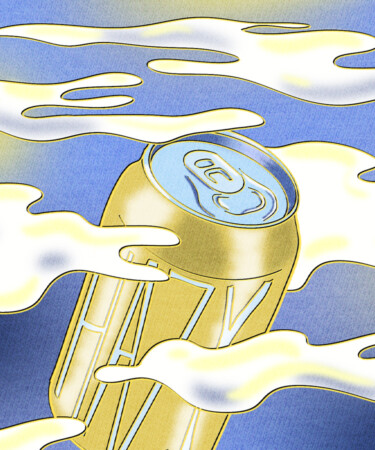Often compared to bright, frothy orange juice, hazy IPAs have become the recent obsession of America’s beer scene. Also known as New England-style IPAs (or NEIPAs, for short), this subcategory has rapidly gained a dedicated fanbase over the past several years, popping up at breweries and specialty beer stores across the country.
With roots extending from Vermont’s prolific brewer community, hazy IPAs are beloved for their silky, velvety texture, citrus and tropical fruit aromas, and a less aggressive hop bitterness than traditional IPAs. While cloudiness has typically been an indicator that a beer is faulty, when it comes to hazies, the opacity is intentional and plays an important role in its overall taste and mouthfeel.
Besides being unfiltered, what’s behind the category’s unique appearance? To get to the bottom of how these “juice bombs” become hazy, VinePair reached out to two beer experts.
According to Brian Kulbacki, the founder of Jersey City’s Departed Soles Brewing Company — a brewery that offers a host of IPAs including one or two gluten-free options — “most hazy IPAs derive their haze from two things: proteins and hop oils. More insoluble protein [proteins that don’t break down as easily; more common in oats and wheat than barley] in your grain bill will give you a solid base of haze.”
Additionally, “hopping techniques,” which are described by Kulbacki as the variety of hop products used in combination with the timing and temperature in which they are introduced, will bind the hops’ naturally occurring oils to the proteins and “boom — a hazy IPA!” he says.
Similarly, Robert Day, operations manager at Alaskan Brewing Company and an enthusiastic hazy fan, says adding “high levels of malted barley and wheat (to name a few),” is the most common method for imparting haze, adding that the amount of hops also factors into the equation. “All the polyphenols from the hops combine with the protein from the grain, which helps form haze,” he says.
In March, Alaskan Brewing will release Juneau Juice, the company’s latest year-round hazy IPA offering. Day, who says he appreciates that you can “push the envelope” with the hazy category, notes that certain strains of yeast can also help create a cloudy beer. He explains that hazies can be more costly to produce due to the special malt required, and because “usually, this style uses more hops than traditional IPAs.”
Kulbacki also admits that brewing a hazy IPA that lives up to the “hype” can be both challenging and expensive. “Hazy beer presents a ton of unique challenges for small breweries,” he says, “especially when you do not have a filter or you don’t have the cellar capacity to let a beer sit as long as it needs to.” He warns brewers against rushing out IPAs that haven’t been conditioned properly, noting the risks for “hop bite,” which happens when “organic material from the hops are still in suspension in [the] liquid, giving the beer an unsavory spicy and bitter flavor.”
When it comes to drinking hazies at home, shelf life is an important factor to consider. “Please, for the love of beer, keep all craft beer cold, and drink it fresh,” Kulbacki pleads. “Don’t cellar a hazy, or anything really, from your local small brewery.”
